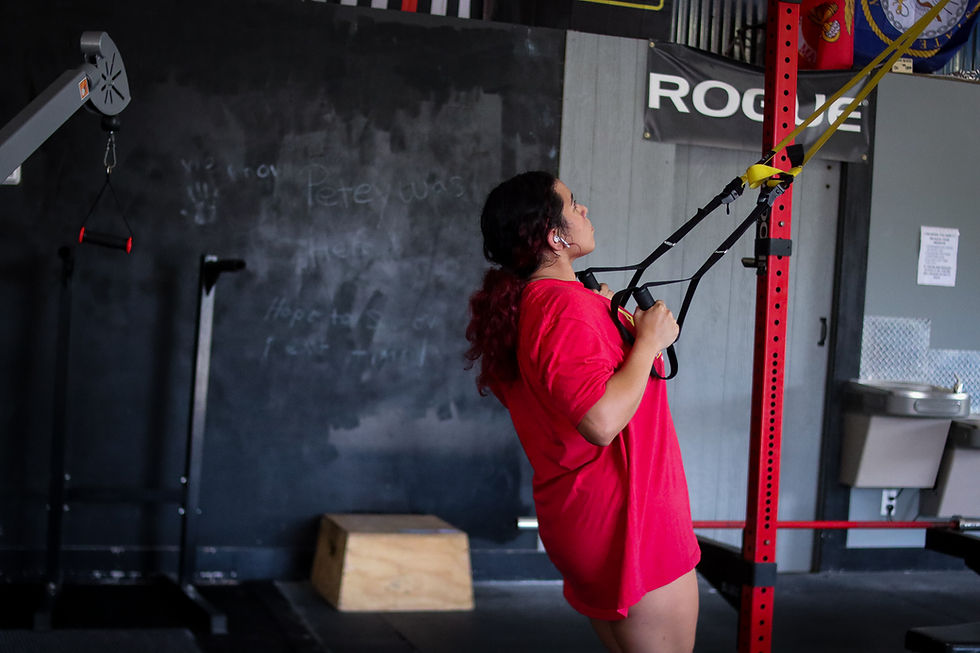Post-Season Training For Wrestlers
- Littauer Strengh Training
- Jan 11, 2023
- 4 min read
It's January, and for wrestlers across the country most have just passed the halfway mark in Competition schedules and practices. For many in North Carolina and across the country, mid-February will be filled with highs and lows as sectional and regional events take place. Winners will move on to State Championships, and losers will be done for the season.

If you wrestle, have wrestled, or you coach wrestlers in any capacity you know how intrinsically motivated wrestlers tend to be. They'll jump straight from a season into prepping for next season with little to no downtime. With this in mind, there's some key things to consider when wrestlers come back and how to approach post-season training for high school wrestlers as they transition into the off-season.
Keep The Conditioning Base

We don't want to lose the high aerobic base wrestlers have built up over the season. This is likely the challenging thing to do from a mental standpoint, but I've realized my own shortcomings in coaching this and doing this when I wrestled back in the day. One of the first things wrestlers will stop doing is any kind of conditioning work. They're sick of the running and cutting weight, and will often want to jump straight back into lifting and eating a lot of food. This is valid, but if we can keep the aerobic base which was built all season, we can set ourselves up for long-term success and increasing our recoverability between sets. However, there are two main things to consider when looking at conditioning principles for the immediate post-season:
Keep it low impact; ditch the running. Especially as the season ends, and wrestlers have likely utilized running for its increased caloric expenditure for weight cutting purposes, we want to shift into lower impact conditioning methods such as rowing, Ski-Ergs, air bikes, and ellipticals. These implements will not only allow targeted Heart Rate and Zone Work, but it will decrease the amount of impact the joints experience as well - especially the knees.
Stimulate, don't annihilate; ditch the intensity. Most wrestlers will have been doing a large quantity of conditioning work in practice. And as sport coaches periodize skill and practices across the season, a lot of their main skill work and live bouts in practice will be treated almost like interval training. When we look at keeping an aerobic base, we're going to be looking for two or three 20-30minute bouts of Zone 2 Conditioning work each week to stimulate the aerobic system enough to maintain some of the base which was built up all season
If we can maintain this conditioning base, we'll be able to set up the off-season training calendar efficiently.
Start With The Bulking

Wrestlers will be sick of cutting weight and watching what they eat. Use this to the advantage during the immediate post-season by hitting a lot of the main hypertrophy work and "bodybuilding work" right off the bat. Especially with the restorative benefits of hypertrophy surrounding blood flow and muscle protein synthesis, using the caloric surplus in combination with hypertrophy work can help accelerate the growth of muscle mass to be used for the following training in the off-season. However, there are two things to consider:
Be aware of the desired weight class for the next year. For high school freshman and sophomores, increasing weight classes is expected and a good thing. They're often hitting the tail end of growth spurts, and can use this added mass. But for juniors and seniors in high school, who are going to be entering senior year or freshman season in college, considering the weight class for the next season is more vital. Many will try to maintain a weight class for optimal recruiting purposes or for success on the mat as a college freshman (dependent on whether or not they compete or are red-shirted). Be careful not to add too much mass to the latter group.
Isolation work is your friend. We often think of sport performance and think compound lifts and a lack of isolation work. However, "bro-work" can be really beneficial for restoring tissue health of muscle and tendon prior to main off-season work, and for clearing away any lingering tendonitis left from the season (very common in knees, elbows, and shoulders). You may even have some weeks of upper and lower body splits to help as part of this.

The big key here is not to go overboard with training, but focus on rehabilitating the body and transitioning back into a generally health state before ramping up the off-season training.
To Sum It All Up
We want to use the post-season to our advantage. We want to utilize the positive aspects of the season's work by maintaining the aerobic base wrestlers have coming out of the season, but we want to give the body time to heal and restore general health before jumping back into heavy preparation. If we can plan training accordingly, we can start the off-season on the right foot and be prepared for the next year.





Comments